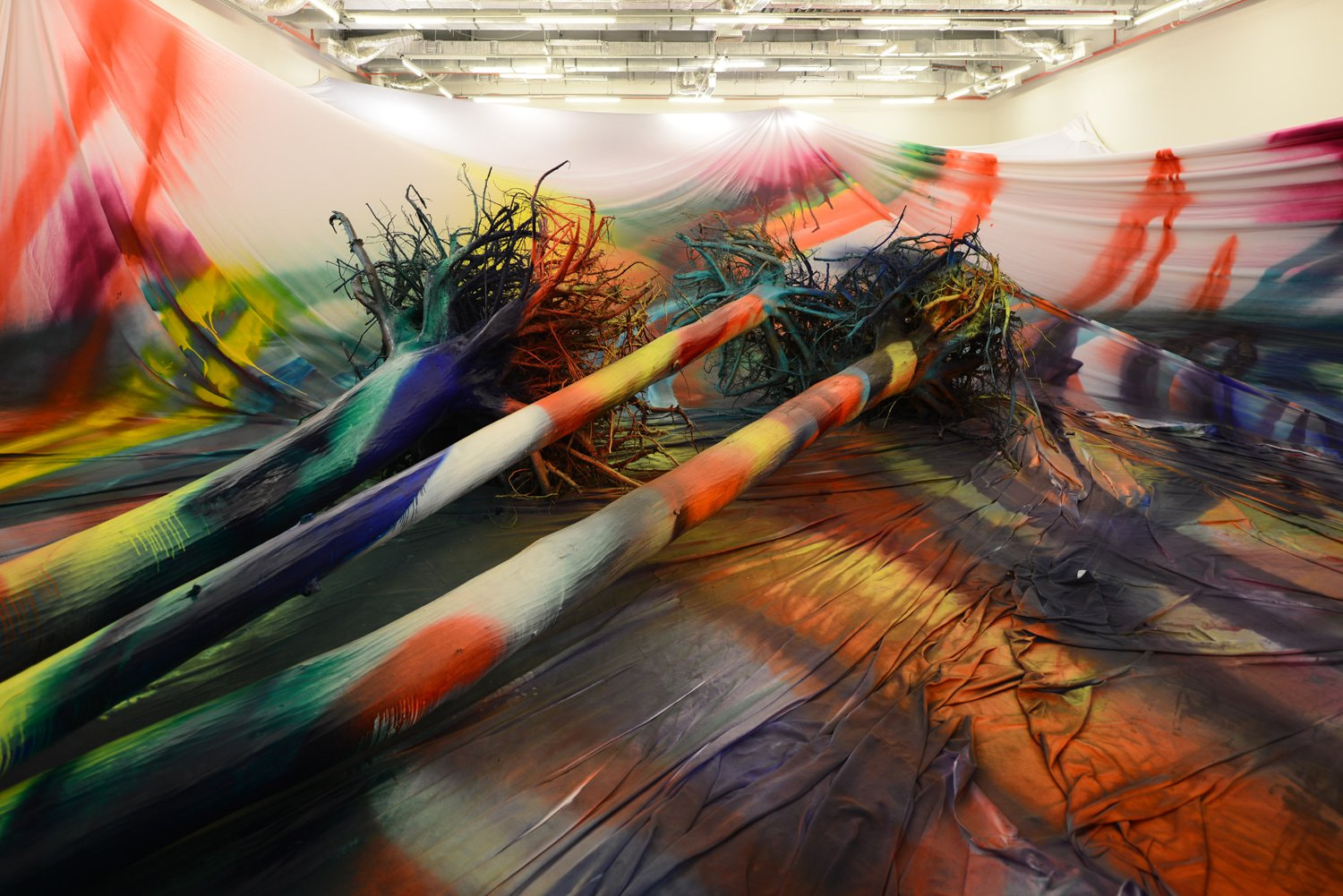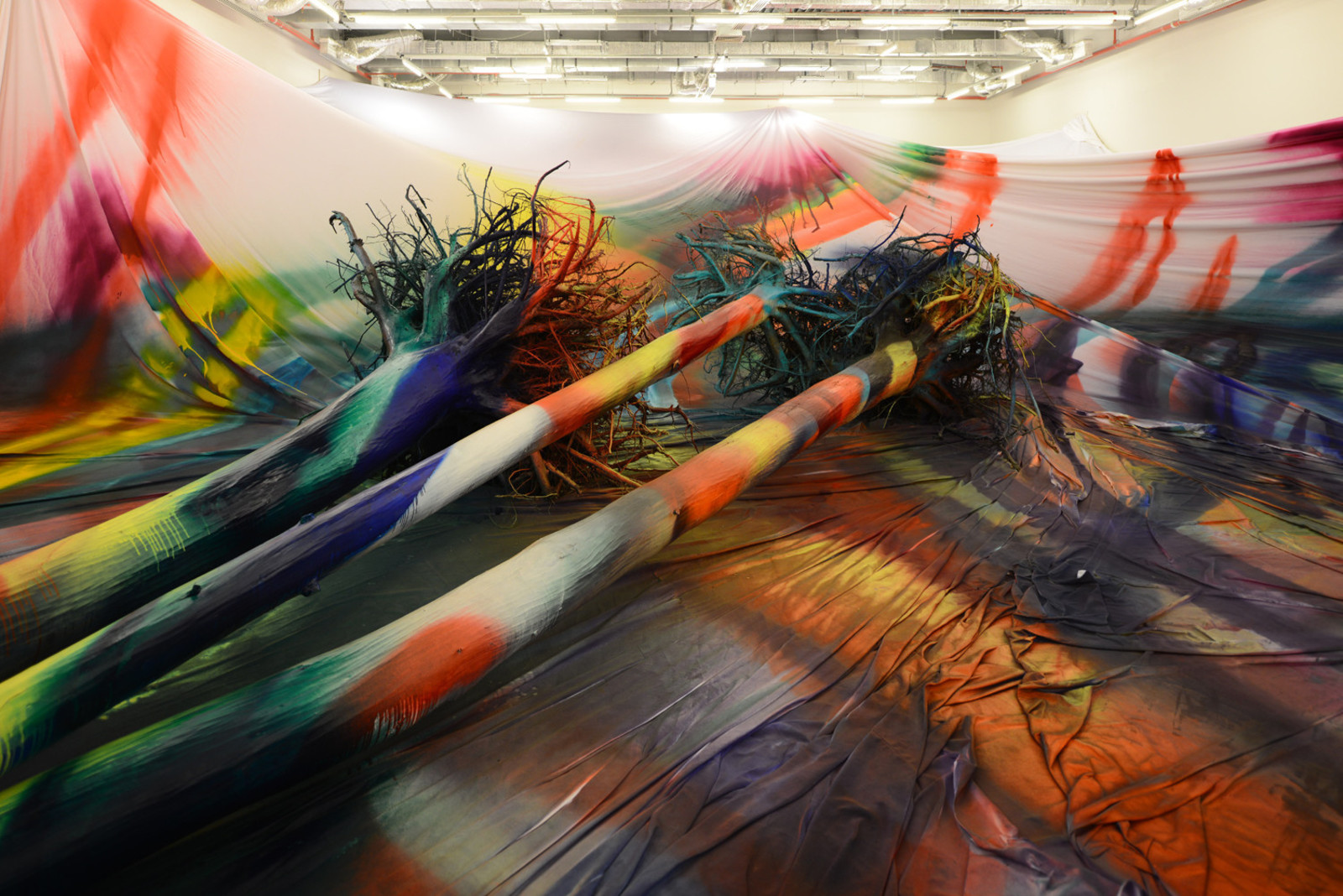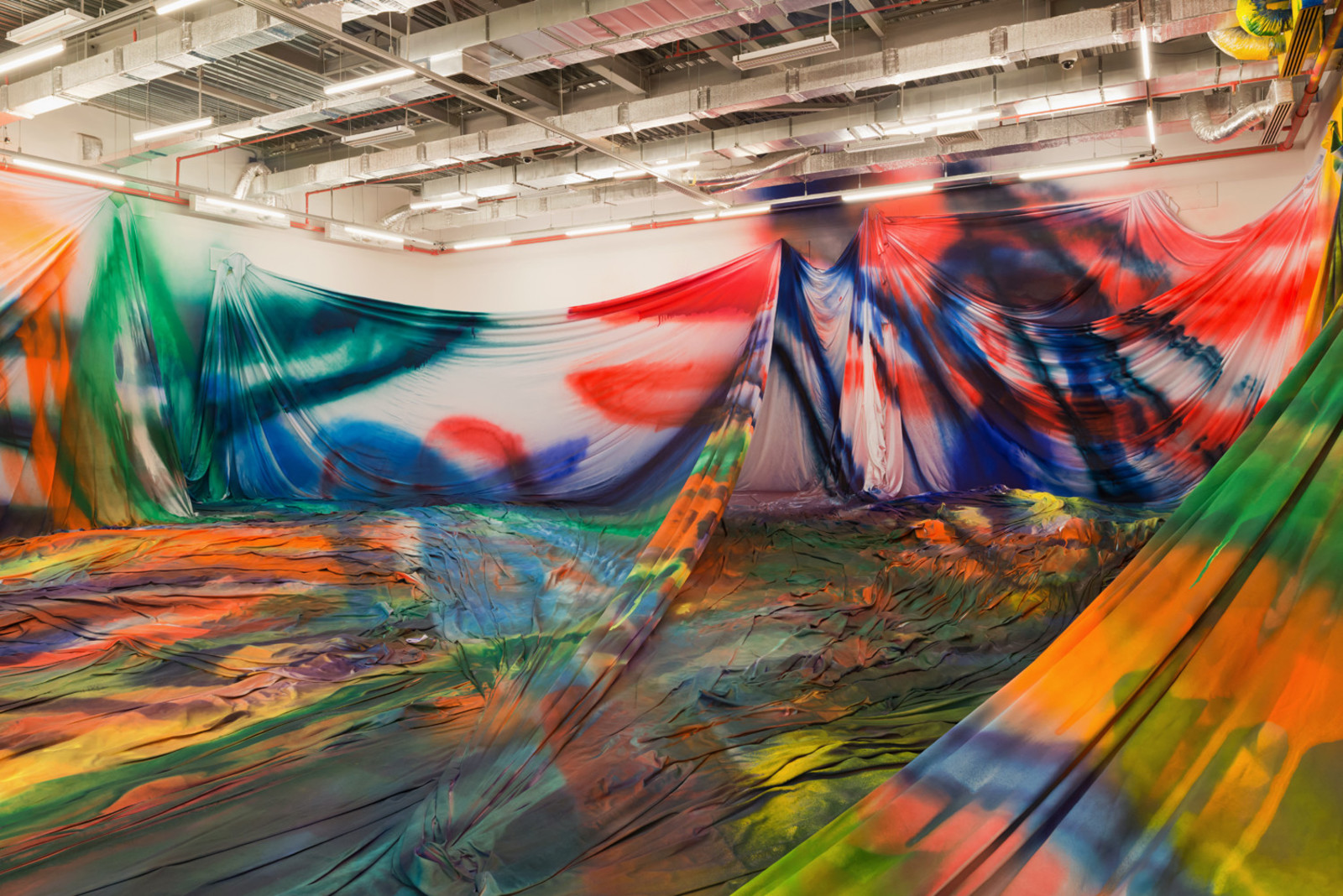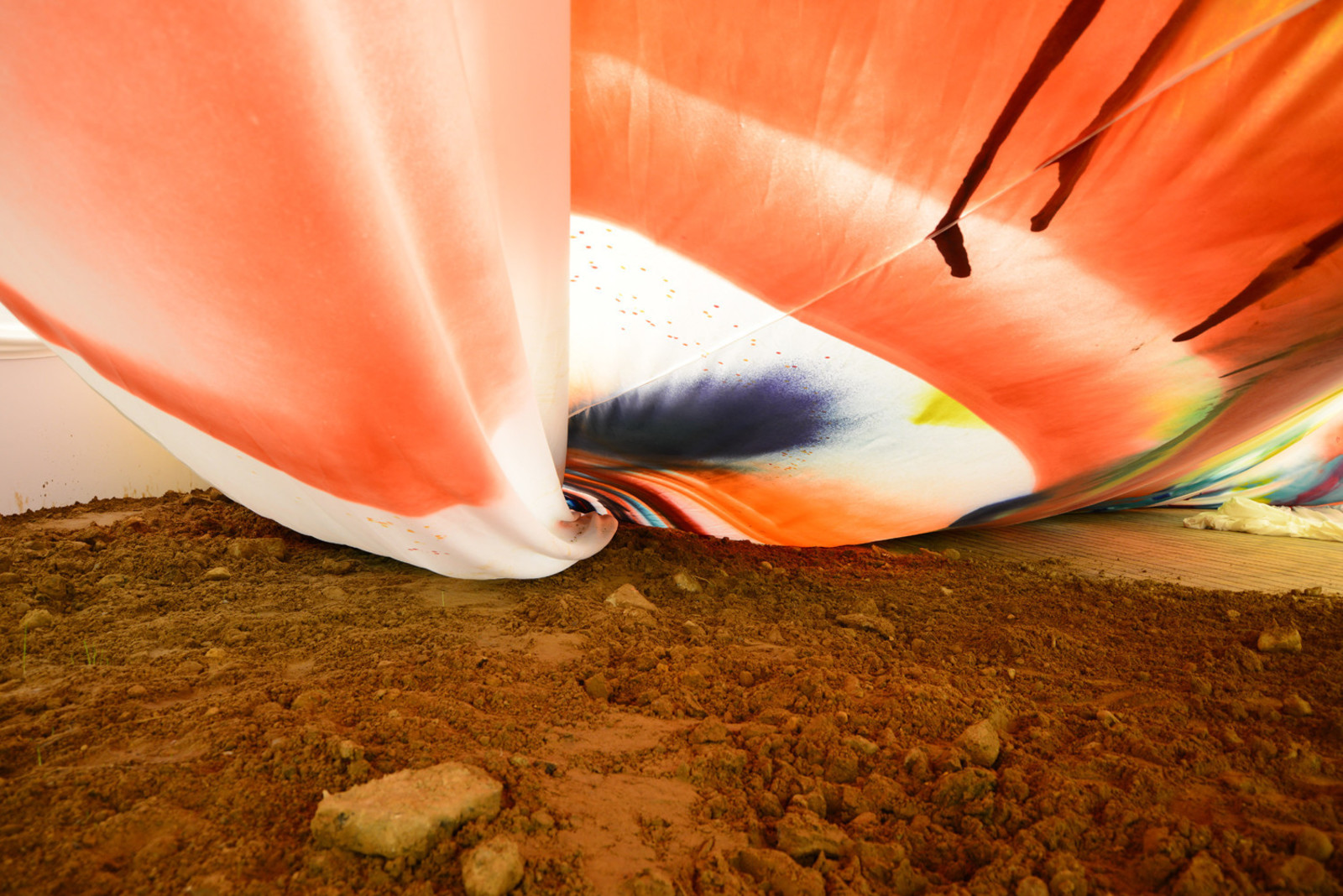For her first exhibition in Russia, German-born artist Katharina Grosse has created one of the largest site-specific installations ever seen in Moscow.
Challenging perceptions of what painting is, the installation yes no why later metamorphoses the 800 square-meter exhibition hall into a spectacular, immersive environment. As the final project for Garage Pavilion, the work has been created specifically for the space and its context, using materials that make the connection between Gorky Park and the architecture of the temporary building, which was designed by Shigeru Ban. The result is a haunting, unearthly, “living picture” that visitors can move through, composed of soil and trees sculpted into surprising formations and contaminated by vivid, raw color.
Since the late 1990s, Grosse has been widely recognized for her painting interventions across incongruent surfaces in open air spaces, office buildings, and train stations, as well as facades and interiors of galleries, museum halls, collectors’ homes, and even her own bedroom. Untethering painting both from the limitations of a canvas support and the restriction of the brush, the artist uses a spray-paint gun to reach places that are beyond the body’s reach, creating complex systems of raw colors and objects as visual traces of where her disembodied gestures took place.
Often, the scale of the installation means that the viewer can only comprehend the whole by moving through the space, experiencing a flow of interconnected fragments. Bordering on aesthetic vandalism, each work simultaneously produces a multitude of perspectives, as well as a complete breakdown of definitions. Similarly, architecture and object neither merge nor remain independent, but acquire new, hybrid forms. At times, these elements migrate from project to project, or are saved from one installation to be repurposed in another. As such, when these “drifting” surfaces become visually evident through their faint distinction from the whole, the installations accrue another dimension, suggesting that a larger narrative is in play that has a past and future, which audiences can witness, or intuit, but perhaps never fully comprehend.
For Grosse, it is these oftentimes contradictory, absorbing experiences that create the “picture.” Its elements may not be wholly visible, of the present moment, nor bound to a particular place, but they are united through their employment in the artist’s painting technique, which accrues a very special temporal quality, both in its realization and in the viewer’s comprehension: “I think that non-materialized existence of thought is underestimated,” says the artist. “We have a lot of possibilities in the invisible. Therefore, we need art. Desperately.”
yes no why later is organized by Snejana Krasteva, Garage Curator.
Thanks go to the team at Studio Katharina Grosse for their assistance in the preparation of this exhibition.




